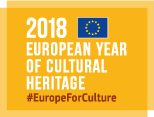iMARECULTURE: Advanced VR, iMmersive serious games and Augmented REality as tools to raise awareness and access to European underwater CULTURal heritagE
Challenge: WHY the innovation has been developed? What problem is addressed and why has not been not solved before?
Underwater archaeological sites are widespread all over Europe and represent an incredible cultural heritage treasure still under-explored by the general public. Accessibility is one of the main issues, limiting public awareness and influencing dissemination strategies to the wider public. Digital technologies can provide a valuable support to ensure an authentic experience for the visitors and encourage self-motivated learning.
Solution: WHAT the solution is about? HOW it goes beyond the state of the art?
Virtual and Augmented Reality applications have been developed and tested by the iMARECULTURE project to provide advanced, immersive and personalized experiences to be used at home, in-situ or at a museum. Based on existing 3D data, three sites have been carefully selected for the VR/AR applications interactive virtual underwater visits, such are Mazotos shipwreck, Baiae archaeological site and Xlendi shipwreck. The visualisations realised provide visitors an interactive and enhanced experience of diving into an unreachable underwater site, while offering additional information through storytelling about the artefacts displayed. Moreover, more advanced immersive technologies will be tested in Thalassa museum (CY), a partner of the iMARECULTURE project.
End-users and examples of uses: WHO will beneficiate/ is beneficiating from the solution? WHERE and HOW the solution has been adopted? How will impact people or end-users? Add as more as possible examples of market and society uptakes
The market is showing increased interest in VR applications in the underwater environment since it is exciting and difficult to reach. Apart from gaming industry, leading the way, users will demand educational content as well as soon as VR devices will start being affordable by a wider public. Synergies between virtual and traditional museums and cultural institutions will support the economic sustainability of such actions.
References for more information (eg. website, social media)
Contacts:
Dimitrios Skarlatos (dimitrios.skarlatos@cut.ac.cy)
Panagiotis Agrafiotis (panagiotis.agrafioti@cut.ac.cy)
Application sectors:
- Historical sites
- Cultural Tangible and intangible landscapes
- Heritage-led urban regeneration and adaptive reuse
- Restoration and conservation of CH
- Tourism economy and impacts
- Circular models for CH
- Enabling digital technologies for CH
Objectives:
- Market/business development
- Regional/Local development
- Knowledge sharing and education
RRI Dimensions:
- Public Engagement
- Science Education
- Open Access
Communities:
- Heritage at risk
- Shared management of cultural heritage
- Advanced future technologies for heritage and arts

